Hangzhou is a city of innovation and vitality that breeds cutting-edge technology companies. Among the “Hangzhou Six Little Dragons”, deepseek and Yushu Technology amaze the world in their respective fields.
Like Deepseek, we are both the “Six Little Dragons of Hangzhou”. What is the origin of Group Nuclear Technology?
Wen| Finet
Hangzhou is a city of innovation and vitality that breeds cutting-edge technology companies. Among the six dragons in Hangzhou, deepseek and Yushu Technology amaze the world in their respective fields.
Hangzhou Qunhe Information Technology Co., Ltd.(hereinafter referred to as Qunhe Technology) is also one of the six dragons in Hangzhou. As it strives to Hong Kong’s capital market, its mystery has also been unveiled to the capital market.
On February 14, Qunhe Technology submitted its prospectus to the Hong Kong Stock Exchange for the first time, and plans to be listed on the main board of the Hong Kong Stock Exchange. If the listing is successful, Qunhe Technology will become the first IPO company among Hangzhou’s Six Little Dragons and the first stock in global spatial intelligence.
It is worth mentioning that Qunnuclear Technology once sprinted to the U.S. stock market in June 2021, but later automatically terminated the U.S. stock listing process.
The founders are from Nvidia and Microsoft, and received 11 rounds of financing in total
Regarding the positioning of Group Nuclear Technology, it can be simply described as a spatial design software provider.
The difference from many software companies is that Qunnui Technology is at the forefront of technology in the spatial design industry: it is a spatial intelligence enterprise based on AI and CPU clusters. It has built a set of world simulators and used them in indoor space. Real-time rendering under scenes, industrial production and manufacturing, and virtual physical world training.
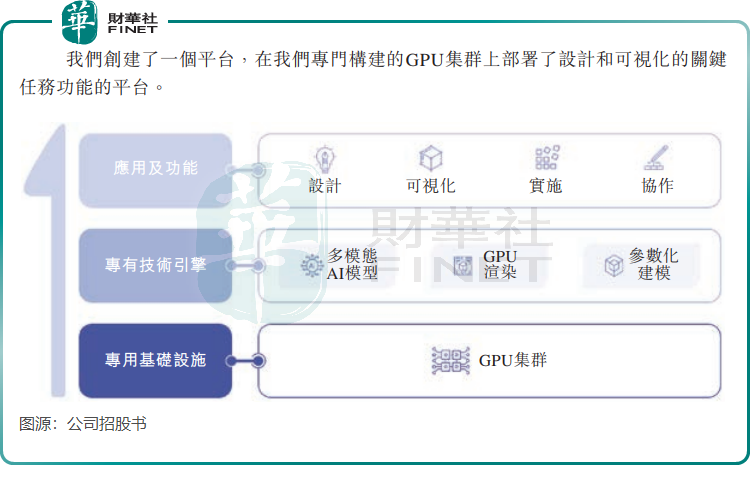
Qunnui Technology mainly has three major softwares:
1. Cool family music. The company’s main products are mainly spatial design software for the China market, which is used to design residences, office buildings, retail chain stores, commercial projects and other purposes.
2、Coohom。Space design software developed for international users and customers serves users and customers in more than 200 countries and regions around the world.
3. Group core space intelligent platform. It is a next-generation spatial intelligence solution for AI development in indoor environments. It can train AIGC models in a virtual environment and enhance the cognitive capabilities of intelligent robots.
In 2024, the average monthly active visitors to the Qunnuclear technology platform will be 86.3 million, and the average monthly active users will be 2.7 million. Based on the average number of monthly active users in 2023, the company is the world’s largest space design platform.
In China, Qunhe Technology is the largest provider of spatial design software based on 2023 revenue, accounting for approximately 22.2% of the market.
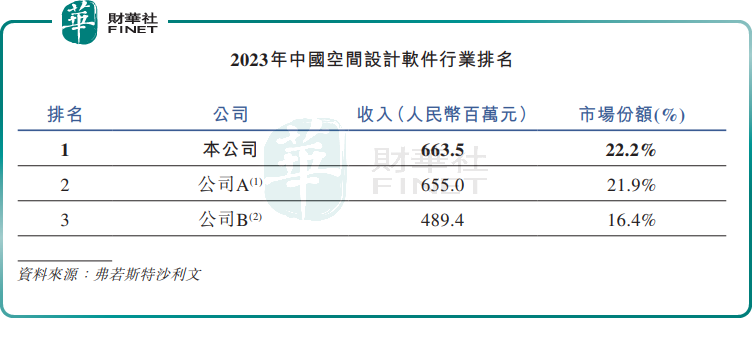
Qunnuclear Technology’s founding team has a strong background, and the company has become the darling of capital since its establishment.
The company was co-founded in 2011 by Huang Xiaohuang, Chen Hang and Zhu Hao. The three are college classmates with an average age of only 39 years old, and they have quite rich work experience. Among them, Huang Xiaohuang, co-founder and chairman of the company, is a national-level overseas high-level talent and once served as a software engineer at NVDA.US; Zhu Hao, co-founder and CTO of the company, served as a software engineer at Microsoft (MSFT. US) headquarters and a software engineer at Amazon (AMZN. US) headquarters.
Since its establishment, Qunhuan Technology has frequently been surrounded by capital and has received a total of 11 rounds of financing. Investors include IDG Capital, Jiyuan Capital, Shunwei Capital, Jingwei Venture Capital, Hillhouse Venture Capital, Coatue and other well-known institutions. Investment.
It is reported that Qunnuclear Technology had a valuation of US$2 billion, equivalent to approximately RMB 14.5 billion, when it rushed into the U.S. stock market.
Smart air outlet in card space is in a loss dilemma
The further integration of artificial intelligence and big data technology, as well as the continuous evolution of visualization technology, have brought about revolutionary changes in promoting the spatial design software industry towards higher intelligence and productivity.
For users to view residential, commercial and industrial spaces, with the help of technologies such as AI and big data, designers and architects can bring higher-quality solutions to the industry, so the space design software industry has huge room for growth.
Data shows that the scale of China’s spatial design software industry has increased from 1.6 billion yuan (unit RMB, the same below) in 2019 to 3 billion yuan in 2023, with a compound annual growth rate of 16.6%. It is expected to further increase to 6.8 billion yuan by 2028, with a compound annual growth rate of 17.7% from 2023 to 2028.
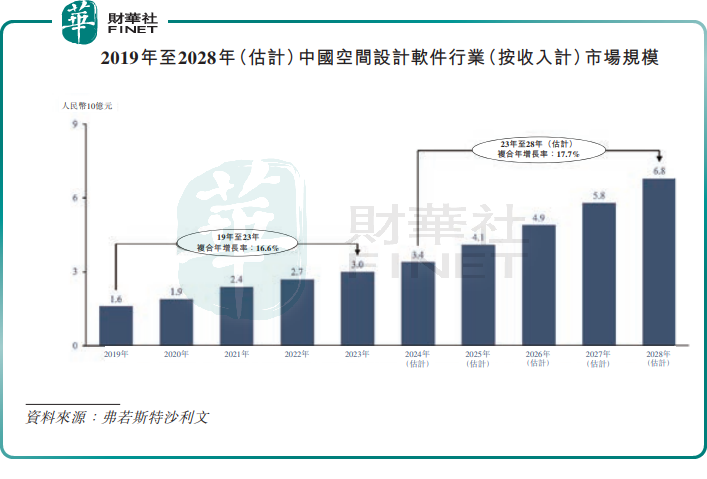
It is not difficult to see that China’s spatial design software industry is small and beautiful, and has broad growth prospects for leading companies in the industry. According to the prospectus, Qunhe Technology enjoys market dividends, its customer number continues to grow, and customer stickiness is high.
From the end of 2022 to the end of September 2024, the number of corporate customers of the company increased from 33,058 to 45,548, and the number of individual customers increased from 311,107 to 413,872. In addition, the net income Retention rate of corporate customers performed well, reaching 104.2% at the end of September 2024, and the net income Retention rate of individual customers was 96.0%.
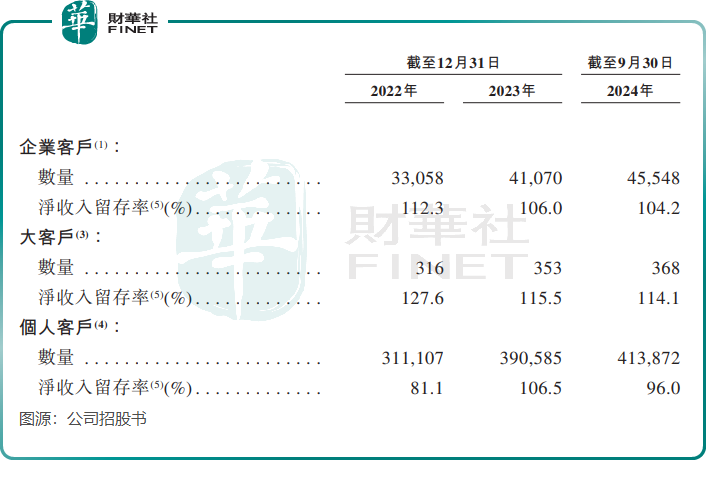
In terms of financial performance, Qunhe Technology’s revenue is consistent with the growth trend of customer size. In 2022, 2023, the first three quarters of 2023 and the first three quarters of 2024, the company’s revenue was 600 million yuan, 664 million yuan, 486 million yuan and 553 million yuan respectively.
In addition, the gross profit margin of Qunhe Technology is comparable to that of the liquor industry, reaching 80.4% in the first three quarters of 2024. During the same period, the gross profit margin of the same competitor Zhongwang Software (688083.SH) was as high as 97.4%.
However, as the company is still in the early stages of development and has high expenditures in R & D and marketing, the company has fallen into a loss quagmire. In 2022, 2023, the first three quarters of 2023 and the first three quarters of 2024, the losses during the period were 704 million yuan, 646 million yuan, 489 million yuan and 422 million yuan respectively.
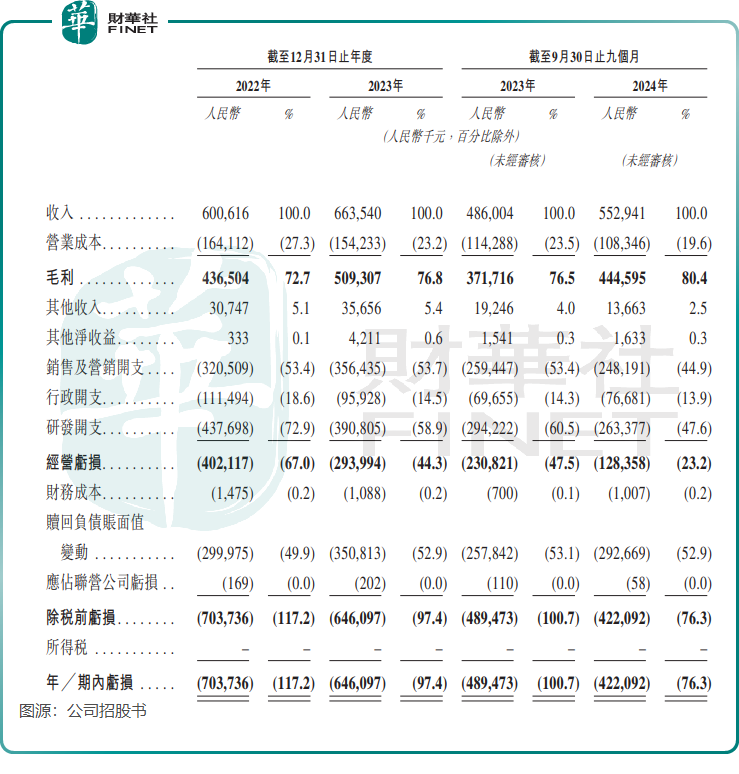
Qunhe Technology said that looking forward to the future, the company plans to achieve long-term profits mainly by further expanding the company’s customer base, increasing customers ‘lifetime value and management costs, and improving operational efficiency.
Future highlights: AIGC, robots and other fields
In recent years, Group Nuclear Technology has introduced generative AI technology into its products. In December 2024, approximately 29.6% of monthly active users use AI features in the product versions they subscribe to.
In the prospectus, Qunhe Technology repeatedly mentioned that it will strengthen the company’s synthetic virtual data engine, use the company’s spatial scene data set to support the creation of AIGC, training of embodied artificial intelligence, and developing AR/VR and robots.
The company’s group-core spatial intelligence platform allows developers to train AI-generated content (AIGC) models in a virtual environment and enhance the cognitive capabilities of intelligent robots, AR/VR systems, and tailored artificial intelligence. In terms of training intelligent robots, the company has cooperated with some companies, including Zhiyuan Robot in the field of robot training data solutions.
Huang Xiaohuang once said that whether it is spatial intelligence or embodied intelligence, there are four most critical problems that need to be solved: algorithms, computing power, data, and robot hardware. How to provide robots with interactive data for training has become a world-class problem. Huang Xiaohuang revealed that in this regard, the company has advantages such as massive data accumulation and large model training, high-performance computing infrastructure, and physically correct data synthesis.
He believes that the robot industry facing the physical world is limited by the slow speed and high cost of training in the physical world. Therefore, the basic industry consensus is that most of them train in the digital world and only enter the physical world after training.
He said that in the future, our life scenes will be full of robots with spatial intelligence and physical intelligence. Of course, all use scenarios require rich physically correct three-dimensional data to train them. It is hoped that swarm core technology can become one of the important thrust forces in the middle.
It is not allowed to reproduce at will without authorization, and the Blue Whale reserves the right to pursue corresponding responsibilities.



